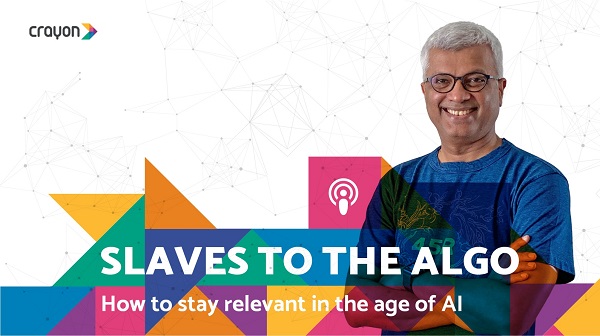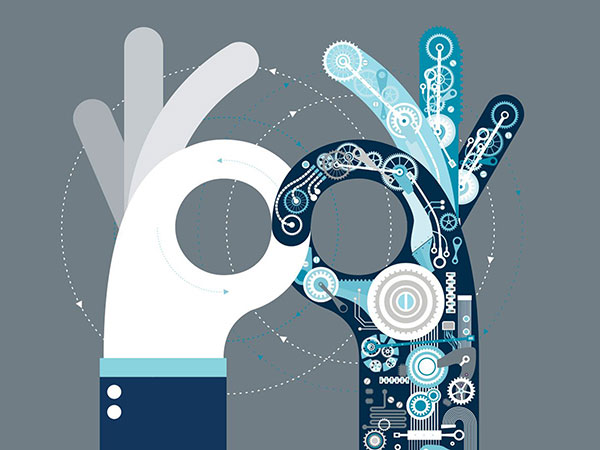Artificial intelligence is one of the fastest moving and least predictable industries. Artificial Intelligence (AI) has the peculiar ability to simultaneously amaze, enthrall and intimidate. The possibilities of AI are innumerable and beyond the scope of our imagination.
Looking ahead to 2020, CIOs will need to better assess the value of their AI bots. And also improve that ROI to the business. By 2020 companies will become laser-focused on AI value. They’ll leap out of experimentation mode, and ground themselves in reality to accelerate adoption. AI has the potential to become the new operating system for the enterprise. “Over the last decade, organizations have been picking up AI know-how and started working with the technology. This year will be a tipping point for the infrastructure needed to support effective deployments, providing integrated learning environments and data ecosystems that support adaptive decision making by AI.
5 industries AI will affect the most
Artificial intelligence and machine learning have both become synonymous with innovation, and the data shows that’s more than just a buzz. These advancements in technology have opened the door for further improving things that we today assume have reached their limits. So much more is possible today that wasn’t, even just a few years ago.
AI processes have unique capabilities that can address an increasingly diverse array of automation tasks. Tasks that defy what traditional procedural logic and programming can handle. We are following and tracking all the developments happening around AI Technology and below are the top 5 trends to look out for in 2020.
AI in Healthcare:
Artificial intelligence and machine learning will play a bigger role in healthcare in 2020. It’ll help medical professionals with everything from oncology screenings to note-taking. As AI is implemented more widely in real-world clinical practice, there will be more academic reports on the clinical benefits that have arisen from real-world use.
With healthy clinical evidence, we’ll see AI become more mainstream in various clinical settings. It’ll create a positive feedback loop of more evidence-based research and use in the field. In addition, AI and ambient sensing technology will help re-humanize medicine by allowing doctors to focus less on paperwork and administrative functions, and more on patient care.
Enhanced customization
For staying ahead of their competitors and preparing themselves for the hyper-transforming realm of business, companies fall over themselves to gain insights in real-time, know about customer preferences and deliver services to them accordingly. Real-time data and all-pervasive location intelligence has mainstreamed customized services in almost every field, from urban mobility to online marketplaces. With soaring customer expectations, companies need to provide more personalized and relevant services to retain customer base and remain relevant. This is where AI will come in the picture.
The increasing use of AI-based applications in every field, coupled with advances in location intelligence, will augment the capacity for offering more refined personalized services.
AI complementing humans
Bill Gates, Microsoft founder and philanthropist, said last year that AI can be our friend. And be beneficial for society. AI won’t compete or supersede humans. Nor would there be a ‘rise of machines’ like ominous scenario. While a lot of jobs would be lost due to AI, many others would be created. Human capacities enhanced with the help of real-time data analytics.
Reskilling would be common in the age of AI and as per a survey by IDC by 2025 over 75% of organizations will invest in reskilling programs to bridge the rising skill gap. According to a 2018 report, the approximate number of qualified researchers currently in the field of AI is 300,000, while companies require a million or more AI specialists.
Improved accuracy and efficiency of neural networks
Neural network architectures will continue to grow in size and depth. It’ll produce more accurate results and become better at mimicking human performance on tasks that involve data analysis. At the same time, methods for improving the efficiency of neural networks will also improve. We will see more real-time and power-efficient networks running on small devices.
The neural generation methods such as deepfakes will also continue to improve and create ever more realistic manipulations of text, photos, videos, audio, and other multimedia that are undetectable to humans. The creation and detection of deepfakes has already become a cat-and-mouse chase. As AI enters more and more fields, new issues and concerns will arise. There will be more scrutiny of the reliability and bias behind these AI methods as they become more widely deployed in society. For example, more local governments considering a ban on AI-powered surveillance because of privacy and fairness concerns.
AI in manufacturing:
“2020 will be the year that the manufacturing industry embraces AI to modernize the production line. For the manufacturing industry, one of the biggest challenges is quality control. Product managers are struggling to inspect each individual product and component while also meeting deadlines for massive orders. By integrating AI solutions as a part of workflows, AI will be able to augment and address this challenge.
In the same way that the power drill changed the way we use screwdrivers, AI will augment existing processes in the manufacturing industry. By reducing the burden of mundane and potentially dangerous tasks. And freeing up workers’ time to focus on innovative product development that will push the industry forward.”
AI and the future
New routes to training AI that can be deployed and refined at the edge will become more prevalent. As we move into the new year, more and more manufacturers will begin to turn to the edge to generate data, minimize latency problems and reduce massive cloud fees. By running AI where it is needed (at the edge), manufacturers can maintain ownership of their data.
AI and machine learning have the potential to create an additional $2.6T in value by 2020 in Marketing and Sales, and up to $2T in manufacturing and supply chain planning.
Gartner predicts the business value created by AI will reach $3.9T in 2022.
IDC predicts worldwide spending on cognitive and Artificial Intelligence systems will reach $77.6B in 2022.
























